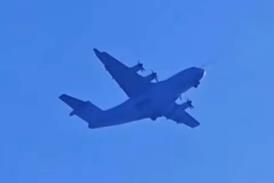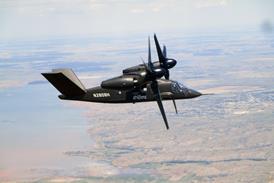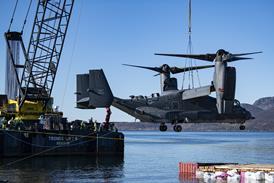PAUL LEWIS / WASHINGTON DC
In a bid to ensure sustainability until 2025, manufacturer will enhance Block II and III
Boeing is turning its attention to further enhancement of theAGM-84 Harpoon anti-ship missile series, building on the improved Block II littoral and anti-surface warfare (ASuW) version, of which the US Navy has recently completed development testing.
The company is looking at a number of conceptual improvements, loosely designated Block II-plus and Block III, with the aim of preparing a plan for the US Navy and international users to sustain the weapon to 2025. The privately funded Harpoon Block II is a "spiral development" capable of addressing future requirements, explains Jim O'Neil, Boeing general manager navy missile systems.
Block II-plus could incorporate additional software modes, improving the missile's trajectory or sea-skimming flight profile and possibly extending the missile's 130km (70nm) range. Block III is intended as the basis for more major modifications beyond 2008 that could offer improved target acquisition and identification through new technology such as a tri-mode seeker and a datalink for real-time updates.
A vertical launch version with the addition of a booster is another possibility that has been examined. "If the market and customers are there, and are interested in funding it, then the capability is there. The concept of Block III is driven by what the customer wants," says O'Neil, but with the caveat that Block II is the starting point.

Any further Harpoon developments could follow the path of the Block II programme, which under a new concept between industry and the Department of Defense was financed by Boeing and tested by the USN although no domestic customer has ordered the missile.
The first Harpoon Block II deliveries will be to Denmark, which is upgrading its existing AGM-84s with retrofit kits, while Taiwan is buying new air and surface- launched versions.
Block II features a new guidance section incorporating a ring laser gyro from the Boeing Joint Direct Attack Munition; GPS receiver, antenna and mission computer from SLAM-ER; and SLAM warhead fuzing. The land-attack SLAM is a Harpoon derivative. The upgraded Harpoon offers improved ASuW accuracy and, with a worldwide shoreline database, the capability to attack littoral surface targets.
The US Navy has so far not ordered kits or new missiles, but Boeing is hoping for funding in 2004 to begin an upgrade of its Block 1C missiles. Australia and the UK are similarly looking at Block II, while the United Arab Emirates is close to completing a deal.
Source: Flight International




















